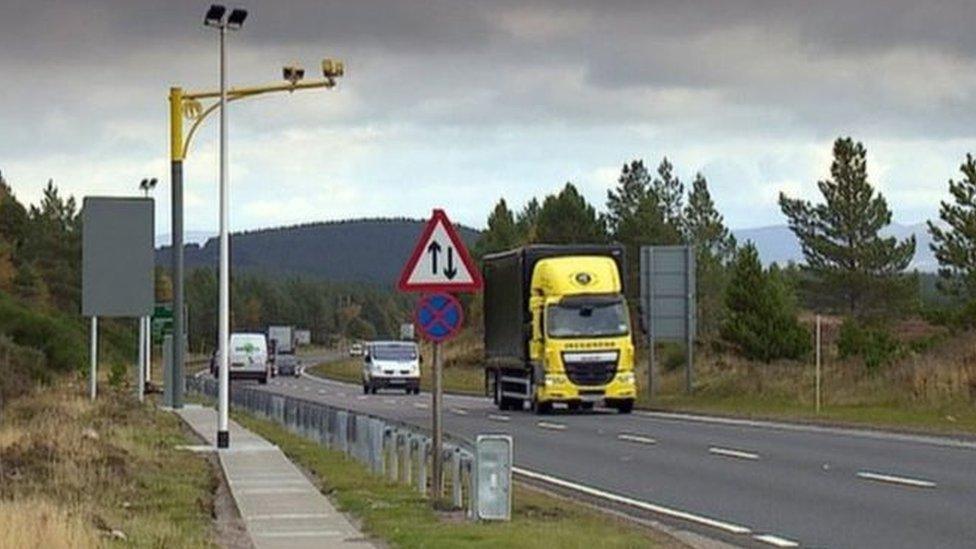Speeding offences on A9 spiked in 2023
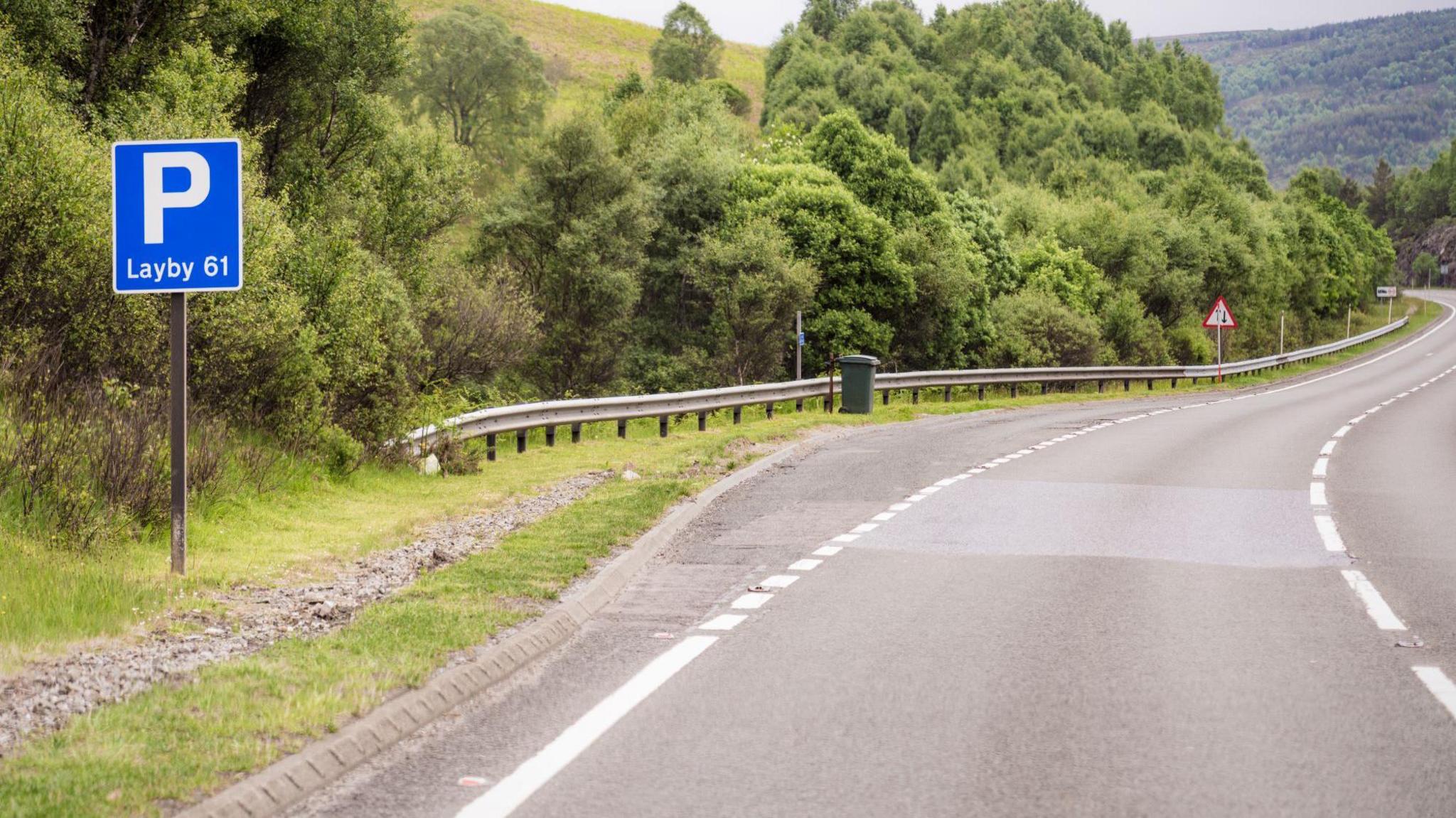
- Published
Figures obtained by the BBC from Police Scotland show speeding offences on Scotland's longest road dramatically spiked in 2023.
That year more than 13,300 drivers were caught speeding on the A9, four times more than the previous year, following the easing of Covid restrictions.
A9 safety campaigners say more visible deterrents are needed as well as harsher punishments for drivers who speed.
Police had previously said a driver was detected speeding at 140mph, but this has since been confirmed as a false reading and should not have been disclosed under a Freedom of Information (FOI) request.
'A danger'
The 273-mile long A9 starts in the Falkirk council area, with the main stretch running from the outskirts of Dunblane, near Stirling, through Inverness to Scrabster on the north coast.
The BBC obtained figures under the FOI Act on the number of speeding offences and the highest recorded speeds on the road for the last four years.
The data showed that offending drivers are getting faster every year - in 2021 the highest speed recorded was 93mph while in 2024, up until 30 June, it was 140mph.
Meanwhile the number of drivers caught speeding by average speed cameras peaked in 2023 at 13,322.
In 2021 and 2022, the figure was 3,177 and 3,123 respectively.
So far 4,885 drivers have been caught speeding on the road this year.
Laùra Hänsler, a safety campaigner with the A9 Dual Action group, condemned speeding on the road.
She said: "I think these people really need to be having their licenses removed because they are a danger on the road.
"I think some people will drive the way they want to drive and they’ll get from A to B as fast as they like - they’re not thinking about their own safety and they’re certainly not thinking about the safety of other drivers on the road.
"I think safety cameras now are so widely used that people get so complacent at seeing them and think they’re infallible. We have to actually have a much harder line on these people."
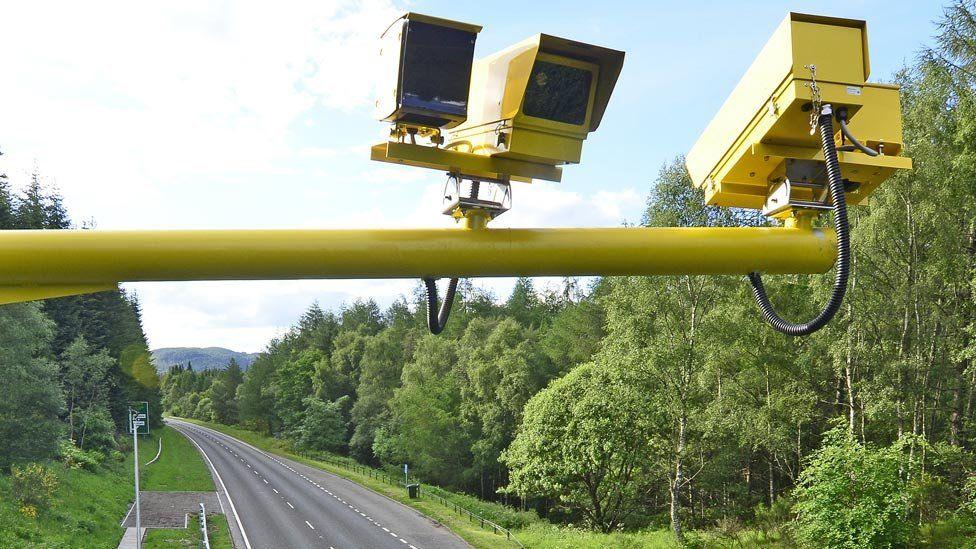
Safety campaigners say those speeding on the A9 should have their licenses removed
Average speed cameras were controversially introduced on the A9 in 2014 at a cost of £3m.
Work was also undertaken to upgrade single carriageway stretches on the road to dual carriageway.
The cameras monitor any cars breaking the 60mph speed limit on the single carriageway sections of the A9.
Critics of the scheme previously claimed it would have little effect on safety, but the A9 Safety Group - which involves Transport Scotland, police and road maintenance companies - said the purpose of the cameras was to encourage compliance with the speed limit, rather than catching a large number of offenders.
The group said while signage indicating locations of speed cameras are not legally required, every camera site on the A9 will be clearly sign posted.
Police Scotland said there was no excuse for speeding and targeting offending drivers was a priority.
A spokesperson said: “Officers routinely carry out enforcement activity to deter speeding and detect those who choose to break the law.
“We will take action against anyone found to be causing an offence."
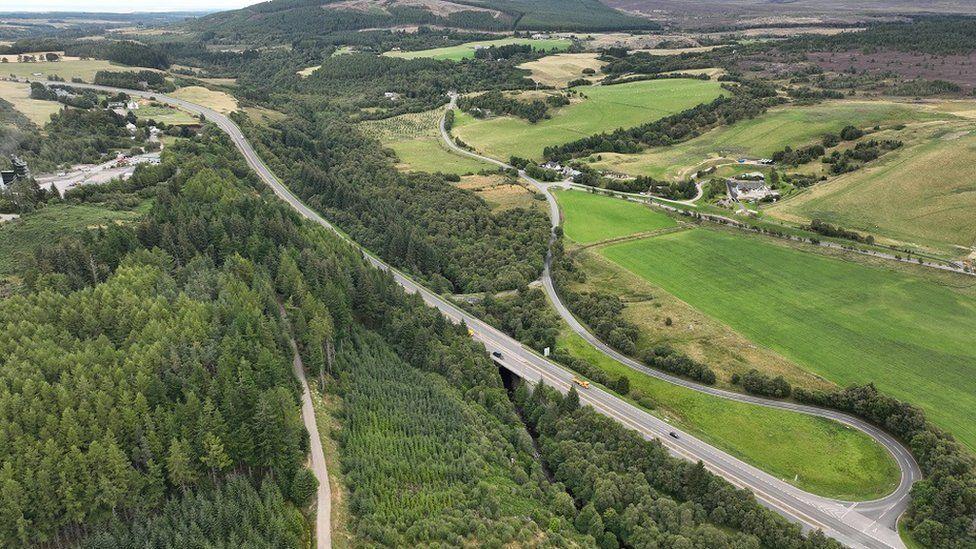
The A9 safety group say the purpose of the average speed camera's are to encourage compliance with speed limits rather than to catch more offenders
A spokesperson for Transport Scotland said: “Road safety is a top priority, as evidenced by the extra £5m for measures between now and 2025 for the A9.
"This includes enhanced road markings, illuminated road studs and improvements to highlight single carriageways and the transitions at dualled sections, as well as junctions.
“In addition, the Scottish government has invested £3.6m on average speed cameras along the A9. In 2022 an upgrade of the average speed system brought in more reliable technology, which has enabled higher levels of speed enforcement along the route.”
Related topics
- Published9 July 2024

- Published20 December 2023
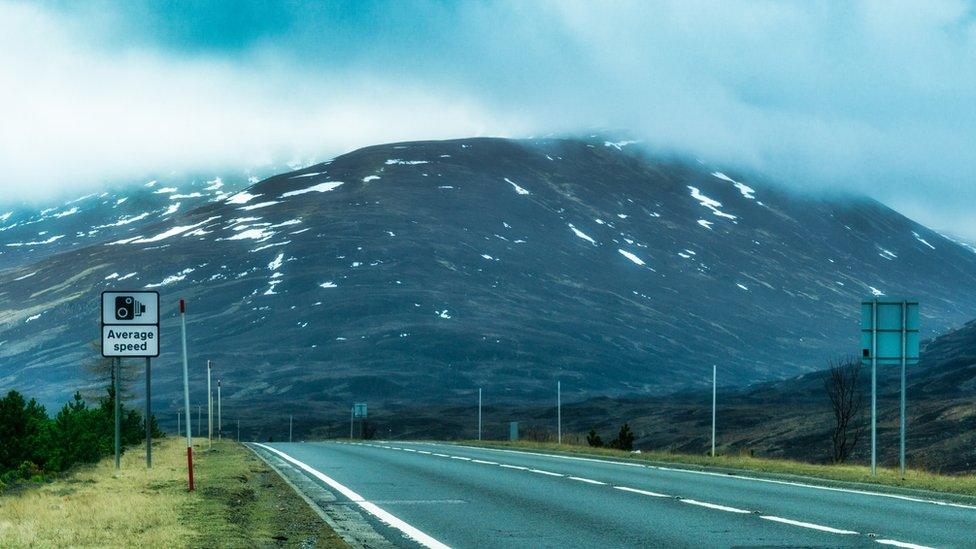
- Published29 May 2024

- Published29 December 2016
